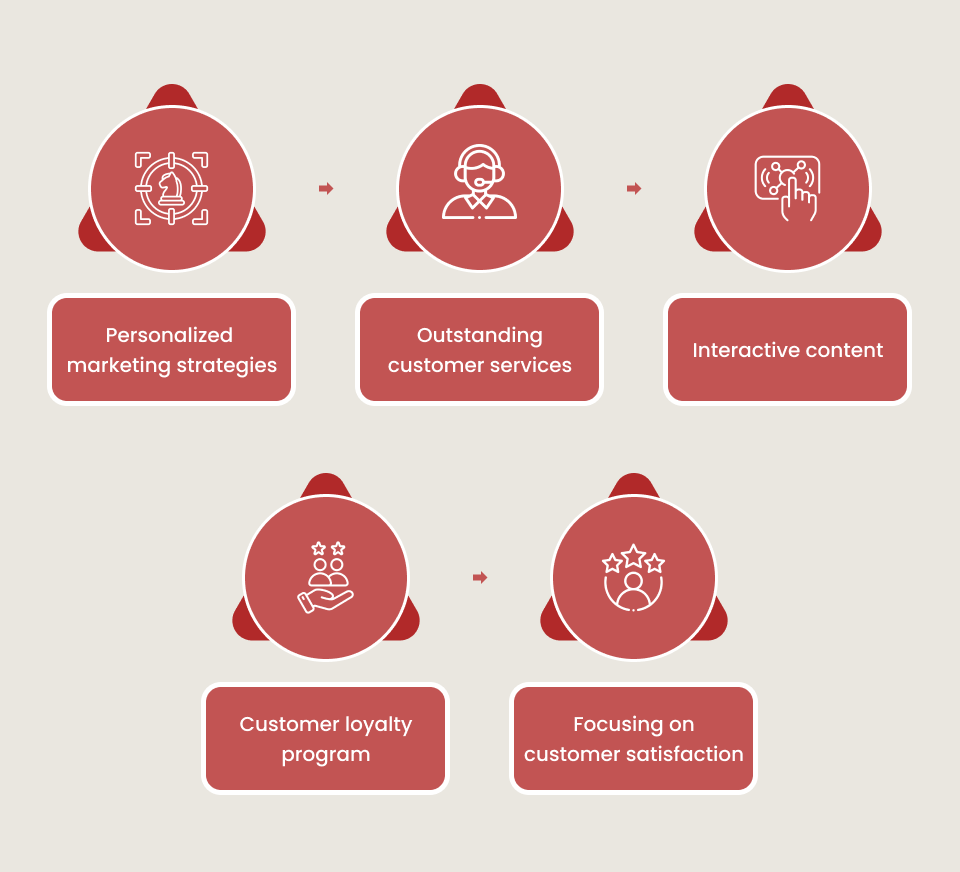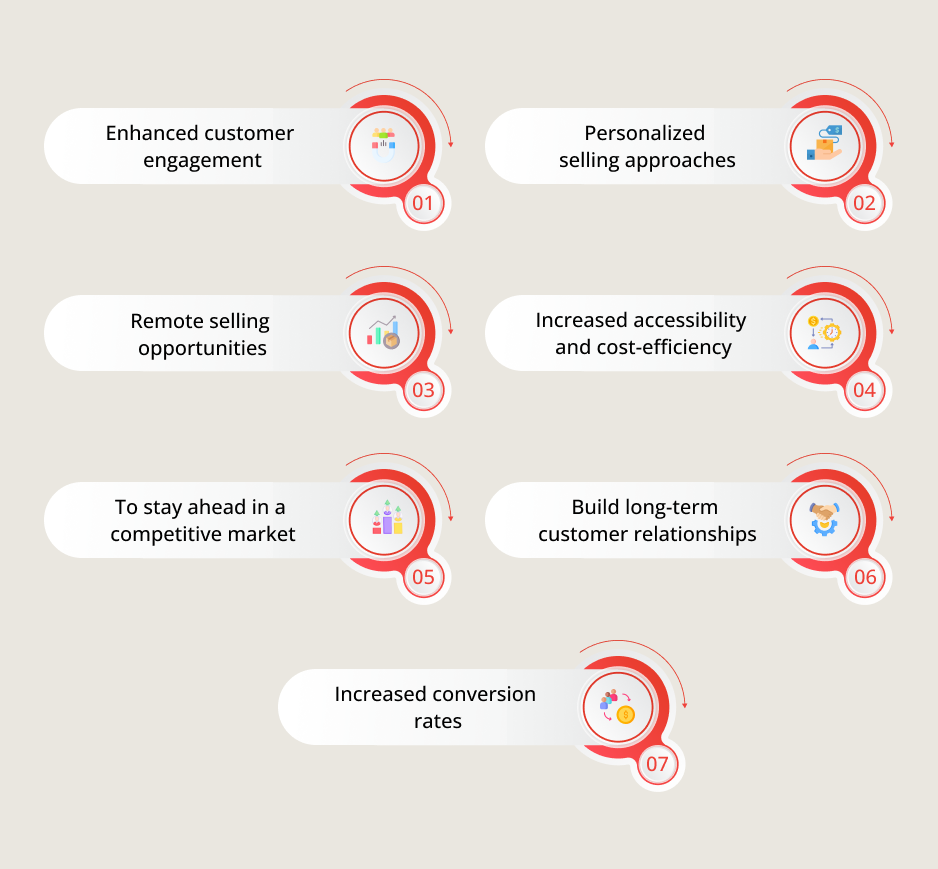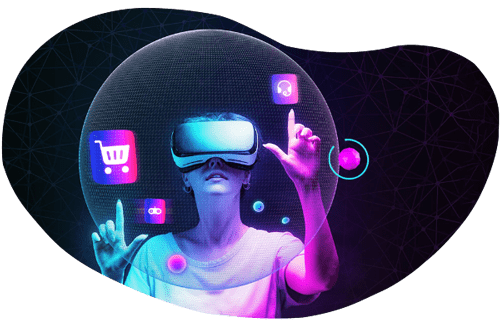Have you been transported non-physically into a different space where you can feel the physical peculiarities of the place, the environment, sound, smell, and even taste? When a good storyteller friend of yours comes back from a scenic vacation and explains every minute detail to you, you get to feel that place without even going there. Or even better, when you watch an ASMR (Autonomous Sensory Meridian Response) food video, it could make people drool for the immersive experience that it delivers through the sound, visuals and overall execution of even a video that is barely 10 seconds!
From food to clothing, makeup, real estate, jewelry and every other sector, interactive and immersive experiences have created a whirlwind in every business. Needless to say, the direct selling fraternity found unexplored opportunities with this stellar technology and weaved new stories of success with advanced customers and distributor engagement through interactive and immersive experiences.
At Epixel, we embrace novelty and innovation. As a result, we imbibe and integrate everything that ensures customer satisfaction. Immersive and interactive technology is nothing short of a brilliant addition that can deliver outstanding experiences for customers in direct selling businesses.
Increasing sales with improved customer interaction
Having a customer could be considered an achievement, but being able to engage them efficiently is where a brand succeeds completely. So, what are the effective ways to enhance customer engagement and boost sales?

Personalized marketing strategies and exceptional customer service
Analyze customer preferences and choices and implement tailored email and marketing campaigns based on customer segments. With data analysis, categorize customers based on what they prefer over what, recommendations and promotions they would prefer. Bring back potential customers by leveraging targeted ads and retargeting.
From basic inquiries to customer complaints and concerns, devise a prompt strategy to address them and respond to them as soon as possible. Through live chat, emails, phone, social media platforms, and every other channel. Acquire customer feedback constantly to improve your products, services, and operational efficiency.
Interactive content
The websites and social media handles have to be interactive and engaging enough to keep the customers close to the brand. Run regular polls, surveys, and quizzes to collect customer feedback and preferences. Also, host customer meetups, community get-togethers, webinars, question and answer sessions, and virtual events to listen to talk to customers.
Customer loyalty programs
With a loyalty program, it is easy to reward repeat customers, which encourages customers to shop often and persuades prospects to come shop with you. Moreover, offering exclusive discounts, rewards, early access to sales or promotions to privileged customers, etc. are cost-efficient ways to allure your customers. Besides this, encouraging influencers or referrals who bring in new customers with suitable rewards and benefits could help create brand advocates.
Immersive technologies and customer engagement
Integrating interactive elements into a human-centric business like direct selling is a powerful strategy to create immersive experiences that can fascinate customers and distributors creating an indelible impact. Giving the business a facelift transfiguring traditional business concepts and putting technology to best use is a necessity. Adopting gamification and personalizing the whole of immersive customer experiences could improve engagement manifolds improving customer relationships with the brand.

What is immersive technology?
Technologies that are designed to create a seamless blend between the physical world and the digital or simulated world. With this technology, businesses could create a sense of presence in the virtual world and engagement for customers and distributors alike.
Immersive technologies like Virtual Reality (VR), Augmented Reality (AR), Mixed Reality (MR), 360-degree videos etc., are unique opportunities to create interactive and unforgettable experiences for customers online and offline.
With numerous options for customers to choose from, activating customer participation by providing hyper-personalization is indeed a necessity. Direct selling businesses are creating firm roots in their customers’ hearts through innovative technologies that redefine businesses.
Immersive technologies powering the direct selling industry
Virtual Reality or VR experiences – Direct selling businesses could make use of VR experiences for product demonstrations where customers get to analyze a product or service in its full sense before they make a purchase. VR experiences are found efficient for conducting virtual tours of a property or a location like hotels and resorts, direct selling real estate businesses, event venues etc. to give the customer an idea of how a physical location looks and feels like.
Augmented Reality or AR applications – More or less similar to VR experiences where customers could try a product before they buy to analyze if the product or service would cater to their purpose. Direct selling health and wellness, beauty and cosmetics, home décor companies etc. have made the best use of this technology to persuade customers to purchase and make informed decisions. Similarly, AR could be put to use for interactive packaging where additional information, videos and other interactive elements could be incorporated to view through a mobile device.
360-degree videos – When you are making reservations for a private pool villa for your vacation at one end of the world, there is no way you could see the rooms and understand for yourself how big and comfy it is. But with a 360-degree video, you could actually get to experience the villa yourself even before making the booking. In the same way, when making a 360-degree video of your production plant of the direct selling jewelry business, home décor, etc. to portray how painstakingly you manufacture products to cater to a wide range of customer preferences, it could help improve the brand’s credibility and improve customer trust in the brand.
Mixed Reality or MR solutions – MR solutions have transformed the way shopping is done in physical stores. Before you pick up a winter jacket of your choice, with MR solutions, you can identify your innate choices blended with what is available in the store and how it fits your preferences. Apart from this, MR can help with distributor training and disseminating knowledge through simulated training. To get real-time hands-on experiences in the industrial set-up, situation handling, safety and compliance, SOPs (Standard Operating Procedures) etc. which are crucial to enhance business operations in any part of the world.
Gamification – Integrating interactive gamification elements for purchases can create awareness for customers making customer acquisition and retention easy. It can improve customer and distributor engagement making their shopping or training fun and enjoyable. Gamification can be used to reward points for customer loyalty programs as well, which can improve customer involvement with the brand by manifolds.
For example, integrating immersive gamification into a direct selling elearning business could help the learner gain knowledge on scenario-based approaches with simple gaming mechanics to get a realistic learning experience, which could resonate with distributors too. Gamifying quizzes with badges and leaderboards could foster a sense of accomplishment, making learning enjoyable and encouraging continuous learning.
In short, immersive technologies integrated efficiently into business strategies could create a more interactive, personalized, and remarkable connection with customers and distributors improving customer satisfaction and loyalty. Over the years, the direct selling sector has integrated metaverse, an amalgamation of opportunities like VR, AR, and MR to carry out business activities efficiently to let customers immerse themselves in an unending world of opportunities.
Benefits of integrating immersive technologies
According to Precedence Research, the global immersive technology market size was valued at $22.5 billion in 2022 and is expected to hit around $67.75 billion by 2032, sure to scale a compound annual growth rate (CAGR) of 22.3% from 2023 to 2032.
These statistics are self-explanatory to emphasis the need for immersive technologies in direct selling business. I am dropping my insights on why immersive technologies are going to be the future of retail selling.

Enhanced customer engagement, for sure. Immersive experiences can elevate customer engagement to new heights while compared to static images and videos. It can also fuel customer participation thus improving brand advocacy and reliability.
Personalized selling approaches leveraging immersive technologies could help distributors tailor strategies suitable for individual customers or customer segments making it easier to target their leads.
Remote selling opportunities are yet another possibility of interactive and immersive technologies where distributors can connect with customers no matter in which part of the world they are in, making it easy for businesses to expand.
Increased accessibility and cost-efficiency, letting individuals access the experience without any physical or geographical limitations. This can also help lessen the travel and logistics expenses but still reach wider audiences while keeping a tight hand on the marketing budget.
To stay ahead in a competitive market. In a fiercely competitive market like direct selling, integrating interactive and immersive elements could help the brand stand out among other brands showcasing its innovation and dedicated commitment to its customer fraternity.
Build long-term customer relationships. Immersive experiences can offer unparalleled convenience and personalized experience for customers and distributors alike. It can thus improve the customer’s affinity, loyalty, and trust towards the brand encouraging them to stay with the brand for a long time.
Increased conversion rates due to highly convinced and motivated leads who are allured by the immersive experience that the brand offers get converted to customers.
While the benefits may vary from business to business, what matters is how the brand is leveraging the technology to improve its sales, profitability and overall visibility in the market.
Gauging the ROI of immersive integrated direct selling businesses
Measuring the ROI of immersive and interactive technology in direct selling entails assessing both tangible financial gains and intangible assets associated with the technology. Gauging every factor that influences the ROI both positively and negatively is important to predict the growth and success of the business during a given time period.
Clearly define the goals and objectives that you intend to achieve with immersive technology. Be its increased sales, higher customer engagement, improved and efficient training methods, predefine your need to integrate the said technology into your channel.
Evaluate the financial metrics associated with implementing immersive technology which includes
- Increase in sales – Analyze if the technology is directly impacting the sales and revenue.
- Cost efficiency – Assess if cost savings are achieved through efficiency gains or reduced expenses.
- Conversion rates – Measure if immersive and interactive experiences are influencing conversion rates.
Track customer engagement metrics to monitor the average time customers spend with immersive elements. Also, track how often they interact and gather feedback and analyze their satisfaction scores related to immersive experiences.
Measure the efficiency of distributor training and onboarding by analyzing the time spent for each and how effectively they retain the knowledge gained through immersive training.
Process data on distributor performance by measuring sales conversion rates and assess how immersive tools are impacting their contribution to improved sales and productivity.
Calculate ROI by determining the total cost of implementing the immersive technology from hardware, software, training and running maintenance and the net gain from the investment.
Evaluate intangible benefits that are hard to quantify such as brand credibility, perception, customer satisfaction, loyalty, etc. that were born out of the enhanced experience facilitated by immersive and interactive technology.
Improve the quality and experience of the immersive elements based on performance data and feedback to make sure that the technology continues to provide value over time.
Direct selling businesses must have a comprehensive understanding of how immersive technology is benefiting the business and measure the ROI on a regular basis to gauge its effectiveness.
Also, monitor AOV or Average Order Value to understand if the immersive experiences are encouraging customers to buy more than what they intended to buy. Customer retention rates also can be analyzed to understand customers' willingness to stay with the brand for longer.
Find out from our customers how our solutions give MLM businesses an edge and exceed customer expectations
The future of technology experiences
The future of immersive technologies seems promising with the evolving trends and advancements shaping the trajectory. However, there are numerous developments and possibilities anticipated for enhanced experiences and improved processes across the gaming and entertainment, education, healthcare, retail and manufacturing, information technology and other industries.
Not to forget, integrating immersive technology with AI or Artificial Intelligence can add up to more realistic simulations, improved personalization and intelligent interactions in both virtual and augmented environments. Immersive technologies could also help improve the direct selling landscape with social and collaborative experiences that can improve inter-business and intra-business affairs with improved human involvement.
Similarly, immersive ecommerce experiences can find new dynamics with virtual try-ons, AR-based product visualization, and interactive shopping environments that can revamp the traditional customer-brand engagement both offline and online.
With the given situation, immersive technologies are sure to become more pervasive and are bound for increased scrutiny on ethical and privacy concerns. For widespread acceptance and trustworthy customer relationships, it is better to strike a clear balance between immersive experiences and user privacy in the direct selling business scenario.
Tomorrows in the direct selling setup seems colorful for its endless opportunities and urge to thrive. Immersive and interactive experiences shall undoubtedly escalate the situation with immersive experiences letting customers shopping online smell perfumes or feel the fabric before making a purchase.
Sounds impossible? Not anymore, you can already smell the aroma of my dark roast Irish coffee, don’t you?









Leave your comment
Fill up and remark your valuable comment.